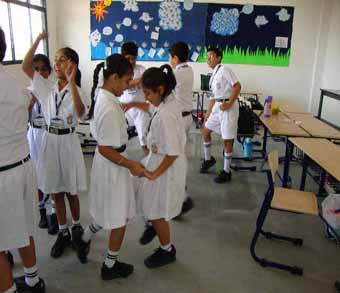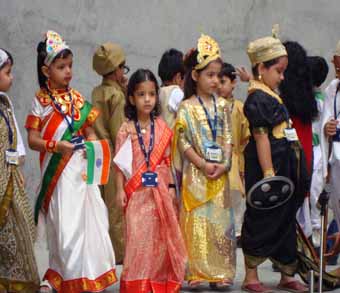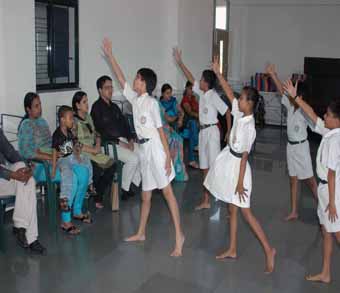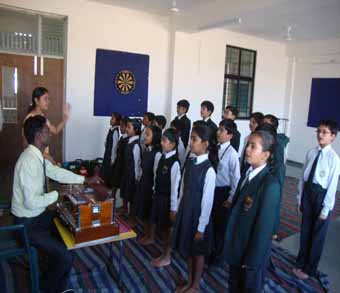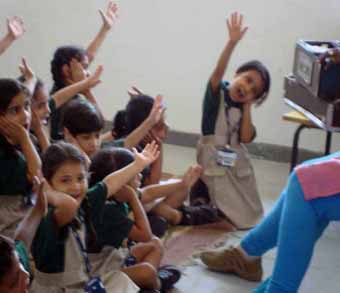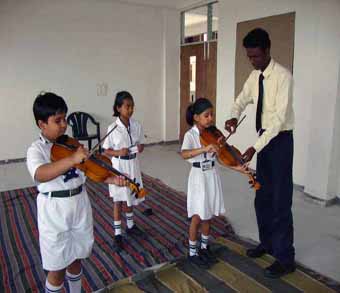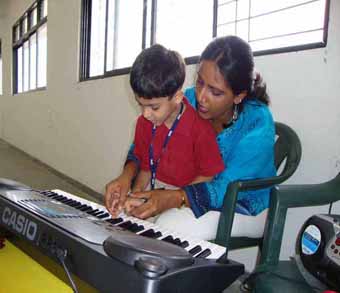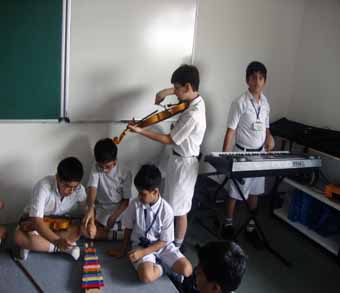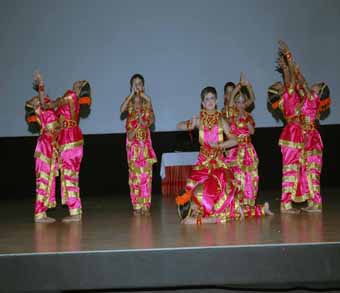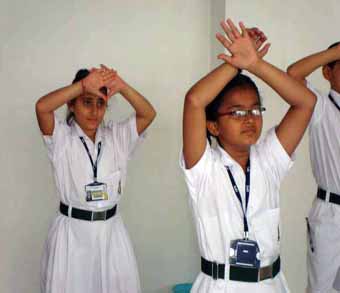Musical Rhythmic Centre
MUSIC AND DANCE
The performing arts are given great emphasis as it is the aim of our budding musicians and dancers at DPS Tapi to preserve and promote the rich cultural heritage of India. We wish to explore the aesthetic and spiritual mainspring of Indian classical and folk dance as well as of Eastern, Western, instrumental and vocal music.
Our teachers simplify the language of music to make it more attractive to young learners. You can learn what you understand – and thus begins a lifelong love affair.
The basis for Indian Music is sangeet which is a combination of three art forms - :
- Vocal Music
- Instrumental music
- Dance
All the three Branches are taught in our school.
North Indian Classical Music
The seven basic notes sa, re, ga, ma, pa, dha, ni, are taught in various combinations as sargam geet to exercise the vocal cords of the students. Ragas are the combinations of swaras, to depict a particular mood associated with a particular time of the day or a season. Some ragas taught in are – Yaman, Bhopali, Bhairav, Desh, Vasant, etc.
Classical music is taught in vocal as well as instrumental form in wind, string and percussion instruments like tabla, drums, violin, flute, harmonium, casio, etc.
In Folk Music, the students learn songs composed in the local dialect that capture the particular essence of a region and is connected to the day to day lives of people living there.
Bhajans and Hymns or devotional songs through which we try to communicate with the Almighty are taught in diverse languages and address different religions.
Nature songs depicting the inherent connection between man and other beings in creation has emerged out of the living and non-living aspects of nature. Our students express their love for and dependence on Nature’s beauty and power in such songs.
The students learn Patriotic songs which have both expressed as well as inspired love for one’s country.
We teach Inspirational songs which play an important role in keeping our spirits from flagging in the daily strife and petty frustrations of life. They encourage us to do better and progress towards perfection.
During our Annual Functions, we compose, tune and choreograph Theme songs featuring important concepts, creativity, emotions, aspirations, etc.
Classical Dance
We teach Kathak, a popular North Indian classical dance form preserved in the Lucknow, Jaipur, Banaras and Delhi gharanas. The intricate foot work enhanced by ghungroo, keeps pace with the bols to the accompaniment of harmonium and table.
We also teach Bharatnatyam, a classical dance form began in the temples of southern India. It is a complex and stylized aesthetic expression of the spiritual principles of yoga or union between devotee and god and between dancer and dance, based on the physical symbol of mystic balanced triangles.
The students learn Fusion Dance, a later dance form developed by the legendary Uday Shankar and famous contemporary artistes like Mallika Sarabhai. It is a meaningful fusion of the principles and forms of Indian and Western classical dance and music.
We teach the simpler elements of Western Dance like ball room dance, jazz, tap dance, ballet and salsa. The idea is to provide a cultural diversification and strengthen muscles as well as improve balance. Solo as well as partnered dances are performed, to the accompaniment of suitable instrumental music.
In Folk Dance, our students learn Bhangra, Punjab’s popular folk dance to the accompaniment of dholak, bolis song, snapping fingers, balancing tricks and acrobatic feats and Gidha, a group dance by Punjabi women to the rhythm of clapping hands. The students learn Bihu, a graceful folk dance of Assam, expressing rejuvenation and rebirth with the advent of spring after winter. Dandiya Ras, Teen Taali and Garba Ras from Gujarat form the core of the syllabus. There are also Ghumar, Kachchi Ghodi and Kalbelia expressing the rich folk culture of Rajasthan.
Drama
The students enactthematic skits in English, Hindi and Sanskrit at various school events.They also learn Lavni and Tamasha from Maharashtra embodying the fluency of thought and speech and the tradition of dance drama performed with a social message. They experiment with the forms of Jatra, or Bengali folk theatre, highlighting contemporary social issues.


